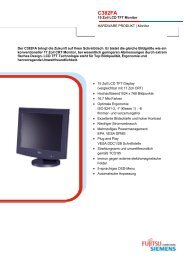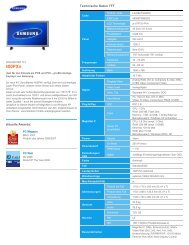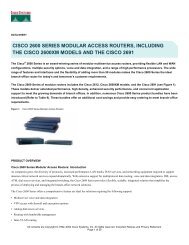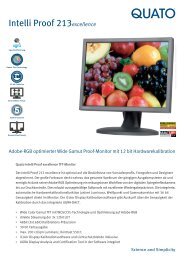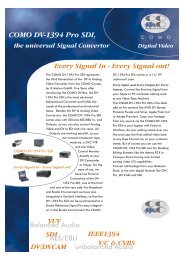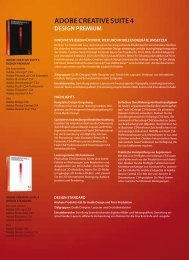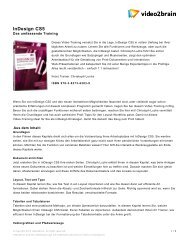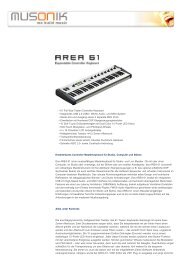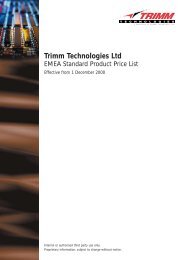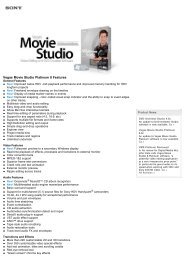Create successful ePaper yourself
Turn your PDF publications into a flip-book with our unique Google optimized e-Paper software.
DSR Wiring Standards (continued)<br />
Pin EIA/TIA 568A EIA/TIA 568B<br />
5 white/blue white/blue<br />
6 orange green<br />
7 white/brown white/brown<br />
8 brown brown<br />
Cabling installation, maintenance and safety tips<br />
Appendices 67<br />
The following is a list of important safety considerations that should be<br />
reviewed prior to installing or maintaining your cables:<br />
Keep all CAT 5 runs to a maximum of 10 meters each.<br />
Maintain the twists of the pairs all the way to the point of termination, or<br />
no more that one-half inch untwisted. Do not skin off more than one inch<br />
of jacket while terminating.<br />
If bending the cable is necessary, make it gradual with no bend sharper<br />
than a one inch radius. Allowing the cable to be sharply bent or kinked<br />
can permanently damage the cable’s interior.<br />
Dress the cables neatly with cable ties, using low to moderate pressure.<br />
Do not over tighten ties.<br />
Cross-connect cables where necessary, using rated punch blocks, patch<br />
panels and components. Do not splice or bridge cable at any point.<br />
Keep CAT 5 cable as far away as possible from potential sources of EMI,<br />
such as electrical cables, transformers and light fi xtures. Do not tie cables<br />
to electrical conduits or lay cables on electrical fi xtures.<br />
Always test every installed segment with a cable tester. “Toning” alone is<br />
not an acceptable test.<br />
Always install jacks so as to prevent dust and other contaminants from<br />
settling on the contacts. The contacts of the jack should face up on the<br />
fl ush mounted plates, or left/right/down on surface mount boxes.<br />
Always leave extra slack on the cables, neatly coiled in the ceiling or nearest<br />
concealed location. Leave at least fi ve feet at the work outlet side and<br />
10 feet at the patch panel side.<br />
Choose either 568A or 568B wiring standard before beginning. Wire all<br />
jacks and patch panels for the same wiring scheme. Don’t mix 568A and<br />
568B wiring in the same installation.<br />
Always obey all local and national fi re and building codes. Be sure to<br />
fi restop all cables that penetrate a fi rewall. Use plenum rated cable<br />
where it is required.





